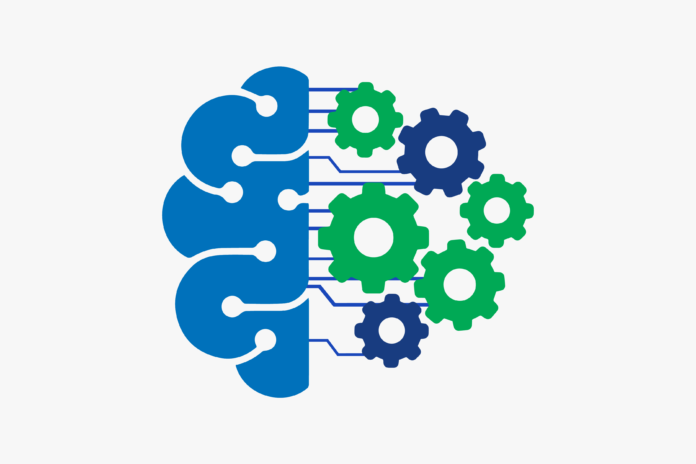Deutsche Post DHL Group and UNDP team up to Get Airports Ready for Disaster
Deutsche Post DHL Group (DPDHL Group) and the United Nations Development Programme (UNDP) celebrate a decade of successful Get Airports Ready for Disaster (GARD) Program.
A trained team and a customized surge response plan are vital when a disaster strikes -that’s why DPDHL Group and the UNDP team up with airports and conduct GARD workshops. Many volunteers and partners have played an important role and prepared over 45 airports and personnel on disaster preparedness in 23 countries.
 GARD is the result of experiences gained from supporting logistics at airports in the wake of disasters. For experts both at UNDP and DPDHL Group, it became increasingly clear that disaster response is more effective if airports are well prepared for these situations. “As a global logistics company we have the resources, skills and networks that can save lives after natural disasters,” explains Chris Weeks, DPDHL Director for Humanitarian Affairs. “We can show airports how to prepare for the surge of incoming response teams and relief goods.”
GARD is the result of experiences gained from supporting logistics at airports in the wake of disasters. For experts both at UNDP and DPDHL Group, it became increasingly clear that disaster response is more effective if airports are well prepared for these situations. “As a global logistics company we have the resources, skills and networks that can save lives after natural disasters,” explains Chris Weeks, DPDHL Director for Humanitarian Affairs. “We can show airports how to prepare for the surge of incoming response teams and relief goods.”
DPDHL Group and UNDP jointly set up multi-day workshops that bring together numerous stakeholders at airports in high-risk areas. “Those facing development challenges often lack the vision to join forces together and make the best use of individual strengths,” explains Patrick Gremillet, Partnership Advisor Disaster Risk Reduction at UNDP. “Combining our capabilities in strong partnerships harbours enormous potential to solve complex problems.”
The latest example for scaling up is the Train the Facilitator GARD workshop. Airport operations experts gather for five-day training to learn how to make their airports disaster-ready and to become national trainers for GARD workshops. So far, 45 airports in 23 countries around the world have been prepared. Among these countries are Armenia, the Dominican Republic, Ecuador, Kazakhstan, India, Mauritius, Nepal, Panama, and the Philippines.
Says Ralf Dürrwang, Vice President Corporate Citizenship at Deutsche Post DHL Group. “Going forward, I also hope that our successful example will inspire even more companies to enter into such public-private partnerships themselves. Because the more we manage to combine our strengths, the more can we make the world a better place.”
CSR: Viscose pollution is fashion industry’s dirty secret
Viscose has often been marketed as a more ecologically sustainable alternative to polyester. It is also praised by some fashion brands because it requires less water to produce compared with cotton.
What is wrong?
Viscose is found in a huge variety of clothes and is used by almost every major fashion brand today. Although not inherently unsustainable, it is the production process of viscose that presents a very problematic story.
Basically, wood pulp is extracted from wood, then turned into viscose staple fibre (VSF) and filament yarn through a highly chemical process using carbon disulphide.
Viscose production faces a three pronged issue: the risk of losing ancient forests, occupational hazards of factory workers, and heavy contamination that results from poor waste management of viscose factories, not only polluting nearby waters and air, but causing widespread illnesses.
Environmental impact
Viscose production has had a big role in the modernisation of India, which is the second largest producer of viscose fibre after China. A study conducted by the Indian Institute of Soil Sciences, claims that a plant in a city in Madhya Pradesh is causing groundwater pollution. Effluent pollution may, of course, be dangerous for the health of nearby villagers, however it may also have detrimental impacts on the soil quality of agricultural land, effectively damaging crops.
Investigators observed blackened water with streaks of colour flowing through in the river just a few kilometres away from the plant. This kind of pollution also spreads an extremely bad smell, which has become an everyday situation for many villages; for instance local residents have complained about the bad stench of “rotten radishes” which is a typical characteristic of the chemical used in viscose production.
Not such an eco-friendly fabric now, is it?
Hum Saaf Saaf Hain: A social comedy on sanitation
A new 14-episode finite series, Hum Saaf Saaf Hain is a social comedy. It trails the journey of an under-cover government official who goes from village to village checking up on the implementation of the Swachh Bharat Abhiyaan.
Hum Saaf Saaf Hain will highlight issues such as ‘Swacchagris’, toilets for the differently-abled, women’s safety and hygiene, ODF Plus and more with the twist of humour to engage the audiences. The show will air on Rishtey starting February 16, every Saturday and Sunday at 9:30 pm.
Commissioned by the Ministry of Drinking Water & Sanitation in partnership with HDFC Limited, Hum Saaf Saaf Hain is being produced by Colosceum Media. Rajesh Kumar (known for his popular stint as Rosesh Sarabhai) will be playing ‘Hero Bhaiya’ who is a government clerk in his mid-thirties, finally getting a chance to fulfill his long-term dream of being a spy. The cast includes Gulki Joshi and Shashi Rajan.
Parameswaran Iyer, Secretary-Ministry of Drinking Water & Sanitation said, “Under the inspirational leadership of the Hon’ble Prime Minister, the Swachh Bharat Mission (Grameen) has become a people’s movement, revolutionizing sanitation in rural India. We are poised at the brink of achieving an ODF India, with 5.5 lakh villages and 600 districts already declared free from open defecation. My congratulations to the entire team behind Hum Saaf Saaf Hain.”
The association has been orchestrated by INS-BE Viacom18, the brand solutions division under media conglomerate Viacom18 Media Pvt. Ltd. The division in the past has successfully engaged with Arunachal Tourism, Himachal Tourism & Odisha Tourism along with prestigious associations with Ministry of External Affairs & DARPG under PMO.
CSR: Ethical Dilemma of Pharma Companies
In today’s world, where CSR and corporate ethics is gaining a lot of importance, a company is expected to follow certain ethical standards in order to sustain. The marketers insist on placing the benefit to the consumers first to ensure maximum satisfaction and hence, retain the customers. However, despite the people seeking ethically responsible businesses, there is one consumer industry which is failing heavily to maintain that – the Pharmaceutical Industry.
The main job of a pharma company is to supply drugs to the market which are safe to consume and would provide relief against various ailments and conditions. However, these private companies who are profit-minded, lose customers if they manage to deliver such safe medicine which cures a person completely of their disease. As a result, the pharma companies lose sight of the purpose of its existence, disregard human safety in return for profit.
In 2010, the drug manufacturing company Boehringer Ingelheim released its FDA-approved blood thinner Pradaxa to market. The drug was advertised as a better alternative to other blood thinners, which did not require any dietary restrictions. This was a big selling point for the drug, but it was also a major safety hazard for patients. For example, in the case of Pradaxa’s competitor, Coumadin (warfarin), patients had to restrict the amount of vitamin K in their diet as it is a natural antidote to the effects of the blood thinner. However, if a patient gets injured and needs an antidote to clot their wound, ingesting vitamin K would do the trick. Pradaxa, however, was prescribed and given to patients without a natural or synthetic antidote available. This lack of concern for patient safety led to over a thousand cases of serious bleeding, other adverse side effects and numerous fatalities.
In 2016, another pharma company called Mylan Laboratories raised the price of their EpiPens by nearly 600% in less than a decade. The company’s CEO justified the rise by claiming that the profit made goes right back into research and development along with product marketing. The problem is, the drug has been used to treat allergic reactions for decades. This caused a life-saving drug to be unaffordable for many patients.
Putting corporate self-interests ahead of consumer interests is not new for business. However, this means, we are in an era that human species are enemy to themselves along with nature and the environment. There is no justification for this deviousness. Ethical practice is not a good deed; it is a responsibility that every company needs to follow.
Thank you for reading the story until the very end. We appreciate the time you have given us. In addition, your thoughts and inputs will genuinely make a difference to us. Please do drop in a line and help us do better.
Regards,
The CSR Journal Team
Tech Mahindra Commits to 22% Reduction in Greenhouse Gas Emissions by 2030
Tech Mahindra Ltd. has committed to reduce its absolute scopes 1 and 2 GHG (Greenhouse Gas) emissions 22% by 2030 and 50% by 2050, from a 2016 base-year.
This has been approved by the Science Based Targets initiative (SBTi). The SBTi approval confirms that Tech Mahindra’s long-term targets are in line with the level of decarbonization required to keep global temperature increase below 2°C, as compared to pre-industrial temperatures, as set out in the Paris Agreement on climate change.
Sandeep Chandna, Chief Sustainability Officer, Tech Mahindra,said, “Tech Mahindra is committed to the Paris agreement targets and is consciously adopting a strategy which will deliver innovative solutions without adversely affecting the environment. SBT gives us a clear roadmap to optimize our carbon footprint and is enabling us to move towards a low carbon economy that will reduce future climate change risks.”
Tech Mahindra is focusing on improving energy efficiency through process optimization, energy conservation initiatives, increased use of renewable energy and by investing in low emission and green technologies.
Cynthia Cummis, Director of Private Sector Climate Mitigation at World Resources Institute, one of the Science Based Targets initiative partners, said: “By aligning their strategy with the goals of the Paris Agreement, they are taking a leading role in the low-carbon transition and positioning their business to thrive as the global economy shifts to a sustainable future.”
The Science Based Targets initiative (SBTi) is a collaboration between CDP, the United Nations Global Compact, World Resources Institute (WRI) and the World Wide Fund for Nature (WWF). The SBTi defines and promotes best practice in science-based target setting and independently assesses and approves companies’ targets.
Impact Bonds: Driving a New Paradigm in Development Finance
Since its launch in 2010, impact bonds have gained much attention in the development finance world. It has been hailed by many development finance experts as an innovative way to address societal challenges by bridging the gap in social impact financing. The latest entrant in the growing list of innovative development financial instruments has also received its fair bit of criticism for the increasing ‘financialisation’ of social development and being too arcane and time consuming to design.
Replicating experiments already made in the developed world, all eyes are on developing countries to test their potential. India, given its maturing social investment ecosystem, is uniquely positioned to attract social impact investors and global philanthropic funds.
Impact bonds are innovative results-based financing in which there are three primary stakeholders – a primary investor, the service provider, and the outcome funder. The primary investor is the one who is willing to fund a service provider – typically an NGO – to implement a social impact project expecting a return on its completion. The outcome of the project is measured by an independent evaluator against pre-agreed outcome metrics. Once these targets are met, the outcome funder refunds the capital with a premium to the initial investor. This arrangement ties the investment to outcomes rather than only activities enhancing the value for money of a given intervention and clearly specifying the cost of the measurable outcomes, instead of the inputs. The investor invests on the risk of achievability of the outcome, failing to which the investor will lose partial or complete investment. The outcome funder pays a premium for funding an intervention that has already achieved its outcomes. The service provider gains resources for delivering outcome-based programmes. In a social impact bond (SIB), the outcome funder is the government, while in a development impact bond (DIB), outcomes are financed by a third-party organization, such as a foundation or donor.
Most of the impact bond contracts that are executed around the world are SIBs. The UK has spearheaded the impact bond market executing one-third of the total contracts. India was the experimental ground for executing the first ever DIB in the education sector, Educate Girls DIB (launched in 2015). Since then, it has executed two more DIBs, a health impact DIB in Rajasthan (launched in 2017) and Quality Education India DIB (launched in 2018).
Educate Girls DIB finished its final year in 2018 achieving 116 per cent of its target for enrolling out-of-school girls, and 160 per cent of its targets for learning outcomes. With the experience gained from its implementation, India is seen to be moving ahead from the proof of concept phase.
It is also important to note that all three impact bonds are development impact bonds being outcome funded by a foundation or donor with the government still at bay. Recognising the emerging appetite for DIBs in India, Global Steering Group launched two outcome funds of USD 1 billion each, the India Education Outcomes Fund and the India Impact Fund of Funds.
A shift towards payment by results not only makes impact bonds attractive for government and state actors in India but also induces greater transparency in channelling taxpayer money. However, as of now, the government is yet to signal its policy commitment towards promoting this innovative mechanism.
 Shunmuga Sundaram Yadav has previously worked for an Italian consulting firm promoting Italian businesses in developing countries and assisting them to participate in projects funded by Multilateral Development Banks. He has also worked on consulting projects for strategizing market entry of Italian brands in India. He has completed a course in Aircraft Maintenance Engineering and a Bachelor’s degree in Commerce. He is currently pursuing a Master’s Degree in Public Policy from Mumbai University.
Shunmuga Sundaram Yadav has previously worked for an Italian consulting firm promoting Italian businesses in developing countries and assisting them to participate in projects funded by Multilateral Development Banks. He has also worked on consulting projects for strategizing market entry of Italian brands in India. He has completed a course in Aircraft Maintenance Engineering and a Bachelor’s degree in Commerce. He is currently pursuing a Master’s Degree in Public Policy from Mumbai University.
Thank you for reading the column until the very end. We appreciate the time you have given us. In addition, your thoughts and inputs will genuinely make a difference to us. Please do drop in a line and help us do better.
Regards,
The CSR Journal Team



















